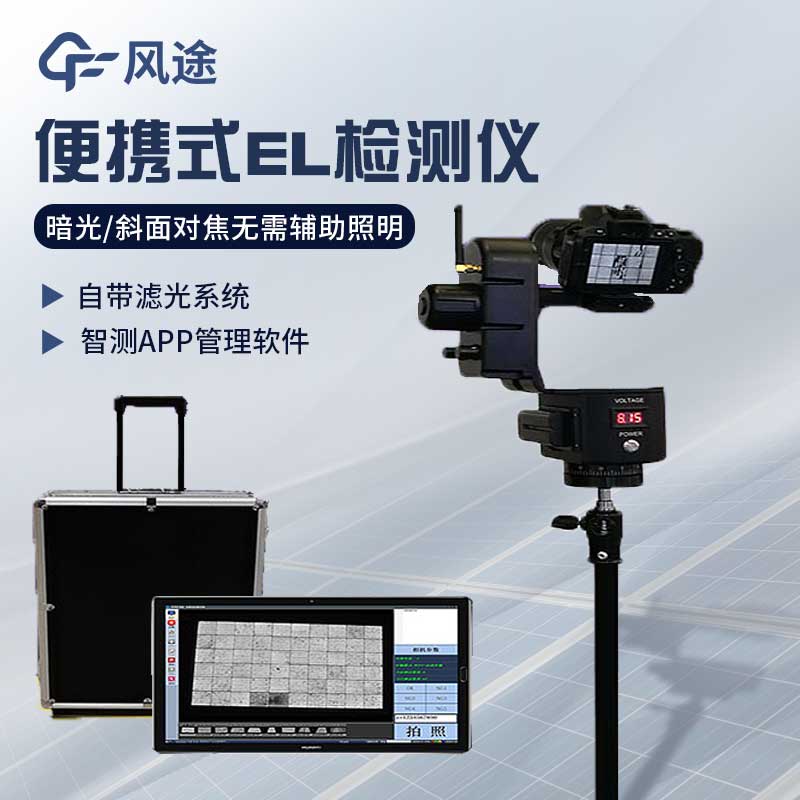Tianqiong Sensor IOT Technology Co., Ltd
Sales Manager:Ms. Emily Wang
Cel,Whatsapp,Wechat:+86 15898932201
Email:info@fengtutec.com
Add:No. 155 Optoelectronic Industry Accelerator, Gaoxin District, Weifang, Shandong, China

Sales Manager:Ms. Emily Wang
Cel,Whatsapp,Wechat:+86 15898932201
Email:info@fengtutec.com
Add:No. 155 Optoelectronic Industry Accelerator, Gaoxin District, Weifang, Shandong, China
time:2025-04-27 09:54:04 source:Weather Station viewed:3 time
In the photovoltaic field, "black heart" is a serious quality issue, manifested as the luminous intensity of some areas inside the photovoltaic module being significantly lower than the normal level, presenting black or dark areas. This indicates that the performance of the battery cells in this part is poor, and there may be serious defects, such as damage to the crystal structure, excessive impurities, etc. This not only greatly reduces the power generation efficiency of the module but may also trigger the hot spot effect due to local heating, shortening the lifespan of the module and even posing potential safety hazards.
So, how can we detect the defective modules with such problems? The Portable el detector is an effective detection tool. It works based on the principle of electroluminescence. When a certain voltage is applied to the photovoltaic module, the electrons inside the module are excited and transition to a higher energy level. When they fall back to a lower energy level, they will release photons, resulting in the phenomenon of electroluminescence. At this time, a high-sensitivity infrared camera is used to collect the luminescence image. Different defects will affect the intensity and pattern of the luminescence, thus presenting different characteristics in the image, based on which we can determine whether the module has defects such as "black heart".
Today, the editor will introduce a Portable el detector (model FT-EL3) with excellent performance. It is equipped with a high-sensitivity infrared camera with 24.76 million pixels and a resolution of 6000x4000, providing clearer imaging effects. It is equipped with an all-time low-light autofocus module, and its autofocus performance is excellent during night tests. With the function of networked wireless control, a tablet computer can wirelessly control the operation of the device and view the detection results. It has a large-capacity energy storage power supply, allowing for on-site testing without any preparation. The programmable constant current power supply can achieve 24-hour uninterrupted testing, meeting the needs of long-term detection.
The FT-EL3 can complete synchronous imaging of 1 to 2 groups of photovoltaic panels, with high image quality and fast detection speed. Its weak current testing function can present clear imaging of hidden cracks under a weak current of 3A. The detection area can reach 4000mm x 3000mm, and it has strong light shielding ability. Light from lamps, moonlight, starlight, slight indoor sunlight, and sunlight with an irradiance of less than 300 do not affect the test. It is suitable for detection work in various scenarios, such as deserts, plateaus, rooftops, hills, slopes, factories, rooftops, snowy areas, greenhouses, agricultural-photovoltaic complementary systems, fish-photovoltaic complementary systems, wind-solar complementary systems, etc.
The device is equipped with an 18mm wide-angle infrared lens, and the focusing mode is all-time low-light autofocus. The battery capacity is 980mah, the memory card is 32GB, and the length of the data cable is 10cm. The capacity of the power module is 10AH, the battery cell is a high-performance lithium-ion battery, the output current is 8A with an accuracy of 0.1A, the output voltage is 70V with an accuracy of 0.1V, the load power is 100W to 600W, and the upper limit is not higher than 700W. It can detect 300 to 500 photovoltaic panels. The control panel is an LED digital display programmable control panel, which has the function of delayed power-off. The programmable control module can realize wireless software control of the power-on for detection. The steady-state module can ensure that the output current and voltage of the constant power supply are not affected by changes in the battery level. It also has circuit protection functions such as short-circuit protection, open-circuit protection, reverse current protection, overheating protection, electrostatic protection, and current-voltage adaptive matching for photovoltaic panels.

Under harsh low - temperature and freezing conditions, anemometers and wind vanes are highly prone to malfunction. As a result, the errors in the collected data increase significantly. Although these devices are equipped with heating units, the units only function on the rotating parts. Once severel...
The construction of smart wetlands takes wetland monitoring equipment as the core, and combines Internet of Things (IoT), big data, and artificial intelligence technologies to build a three-dimensional monitoring network covering hydrology, meteorology, and ecology.The wetland weather stations...
When traditional mechanical weather stations monitor wind speed and direction, they encounter a difficult problem. The wind speed sensor usually consists of wind cups and an axis, and the wind direction sensor relies on mechanical components such as a wind vane. When these mechanical components are...
The FT - SQ2A Handheld Weather Station by TianQiong measures wind speed and direction using the ultrasonic time - difference method. It comes with its own display screen, which can display the detected data in real - time. The station is encased in an ABS engineering plastic shell, which is lightwei...